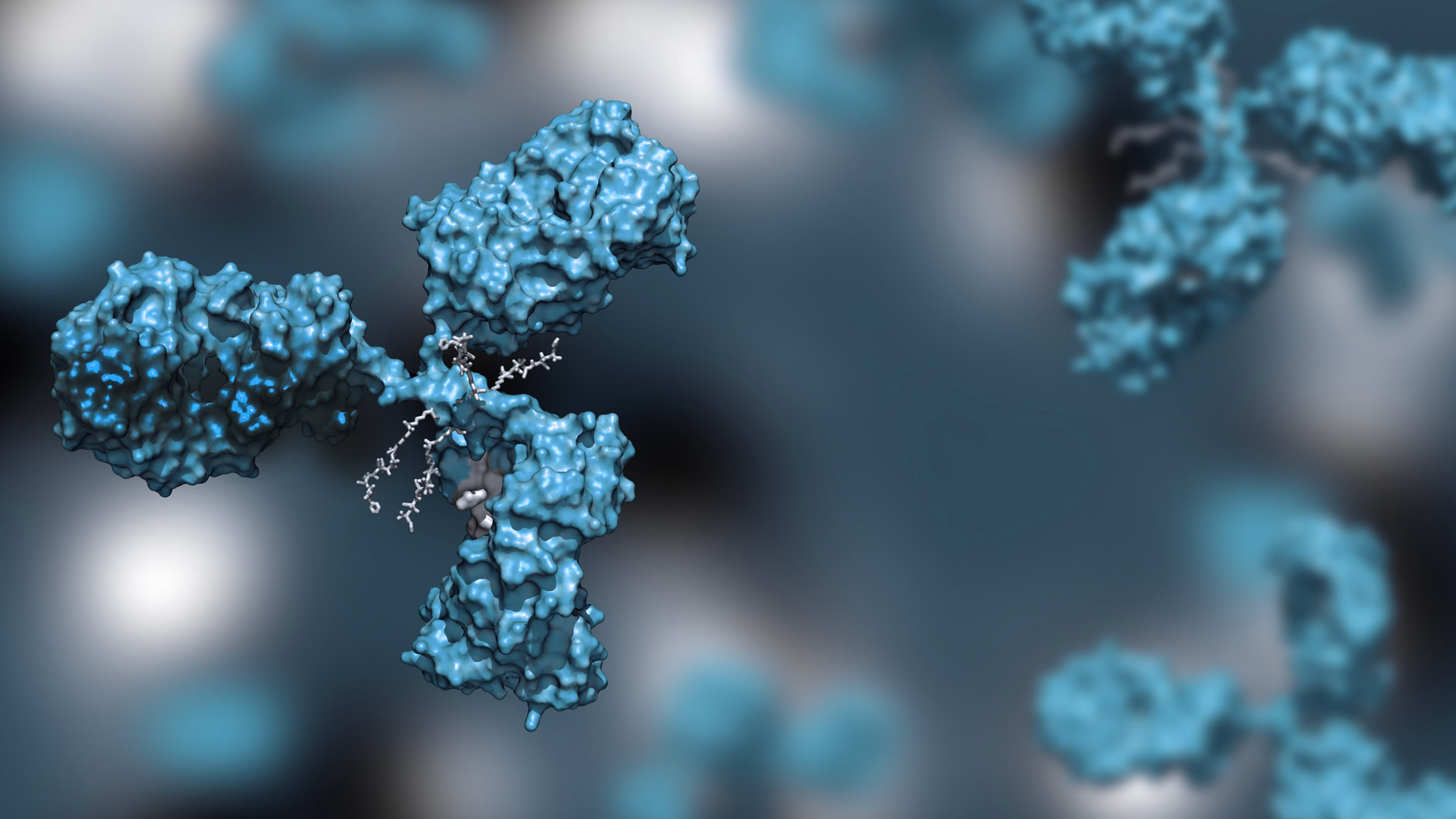Talk to Our Scientists
"*" indicates required fields
Glycosylation is defined as the enzymatic attachment of carbohydrates, or sugars, to the protein backbone. A protein that is glycosylated is known as a glycoprotein. Glycoproteins with complex glycosylation patterns can potentially fall out of specification due to changes in manufacturing processes. To meet regulatory demands, manufacturers must carefully characterize the glycosylation of their proteins and subsequent changes in the activity of the pharmaceutical product. Full glycoprotein analysis provides information on the primary structure of the oligosaccharides as well any changes in individual glycosylation sites.
Glycosylation analysis is critical for the development of biopharmaceutical products. Changes in glycan structure can affect the safety and efficacy of final drug products and should be monitored for consistency.
Changes in cell-line and bioreactor conditions can affect the structure, linkage, or composition of glycans within a protein. Understanding these glycans is essential to providing a consistent drug product.
Our Glycosylation Analysis Services have been developed to meet the requirements regulatory expectations.
Our Glycosylation Analysis Services include:
- Monosaccharide composition analysis
- Neutral and amino sugar analysis
- Sialic Acid analysis
- Oligosaccharide population analysis
- N-glycan analysis
- Linkage analysis
Our scientists are available to discuss which services are most appropriate for your program, with different recommendations on glycosylation analysis for drug discovery and the various stages of the drug manufacturing process.
Monosaccharide composition analysis
Monosaccharide composition provides information on the identity of monosaccharides and determines the types of monosaccharides present in the glycans of the biopharmaceuticals.
Monosaccharide analysis and composition testing will help to:
- Determine the presence of carbohydrate impurities, such as glucose contamination from a purification column matrices or dialysis system
- Understand if more detailed analysis of the glycosylation is needed
- Compare glycoproteins manufactured using different cell lines
- Demonstrate consistency between batches for release during the manufacturing process
- Characterization and confirmation of biopharmaceuticals for new marketing applications
Sialic Acid analysis
Sialic acid analysis can help to identify and quantify sialic acid species in your biopharmaceutical product.
The analysis of glycoproteins and carbohydrates is necessary for all of the stages of drug development. Sialic acid analysis helps you to determine the identities and quantities of the sialic acid species present in your biopharmaceutical product. Sialic acids are a class of alpha-keto acid sugars with a nine-carbon backbone.
We offer a range of techniques, including sialic acid determination, and sialic acid quantification, N-Acetylneuraminic acid (NeuAc) and N-Glycolylneuraminic acid (NeuGc) testing to help you:
- Understand if more detailed analysis of the glycosylation is needed
- Determine and quantify sialic acid species, such as NeuAc and NeuGc
- Compare glycoproteins manufactured using different cell lines
- Demonstrate consistency between batches for release during the manufacturing process
- Characterization and confirmation of biopharmaceuticals for new marketing applications
Oligosaccharide population analysis
Oligosaccharide population analysis can help to identify the overall population profile of glycans present in a glycoprotein.
Oligosaccharide population analysis helps you to determine the identities and quantities of overall population profile of the N-glycans or O-glycans present in a glycoprotein.
Oligosaccharide analysis will help to:
- Compare glycoproteins manufactured using different cell lines
- Develop Biosimilars
- Detect potentially immunogenic glycan structures
- Confirm the presence of N- or O-glycosylation, through N-glycosylation analysis and O-glycosylation analysis
- Identify unusual glycosylation profiles
- Demonstrate consistency between batches for release during the manufacturing process
- Characterization and confirmation of biopharmaceuticals for new marketing applications
Oligosaccharide composition and position analysis is performed by direct analysis of the glycans from the supplied product using the latest liquid chromatography coupled to high resolution Orbitrap mass spectrometric detection.
Linkage Analysis
Linkage analysis can be used to determine the identities of the various linkages between the monosaccharides present on your protein.
Linkage analysis of glycoproteins and carbohydrates can be used to determine the identities of the various linkages between the monosaccharides present. A detailed picture of the glycans present and identification of specific linkages of functional importance can be determines in conjunction with oligosaccharide population analysis.
Our techniques include using the latest liquid chromatography coupled to high resolution Orbitrap mass spectrometric detection to help you:
- Compare glycoproteins manufactured using different cell lines
- Detect potentially immunogenic glycan structures
- Demonstrate consistency between batches for release during the manufacturing process
- Characterization and confirmation of biopharmaceuticals for new marketing applications
CovalX analytical services can help you determine the consistency of the glycans of your glycoproteins that can occur with any changes to your manufacturing process.
Please contact us to discuss the options for analysis with our scientific team.





